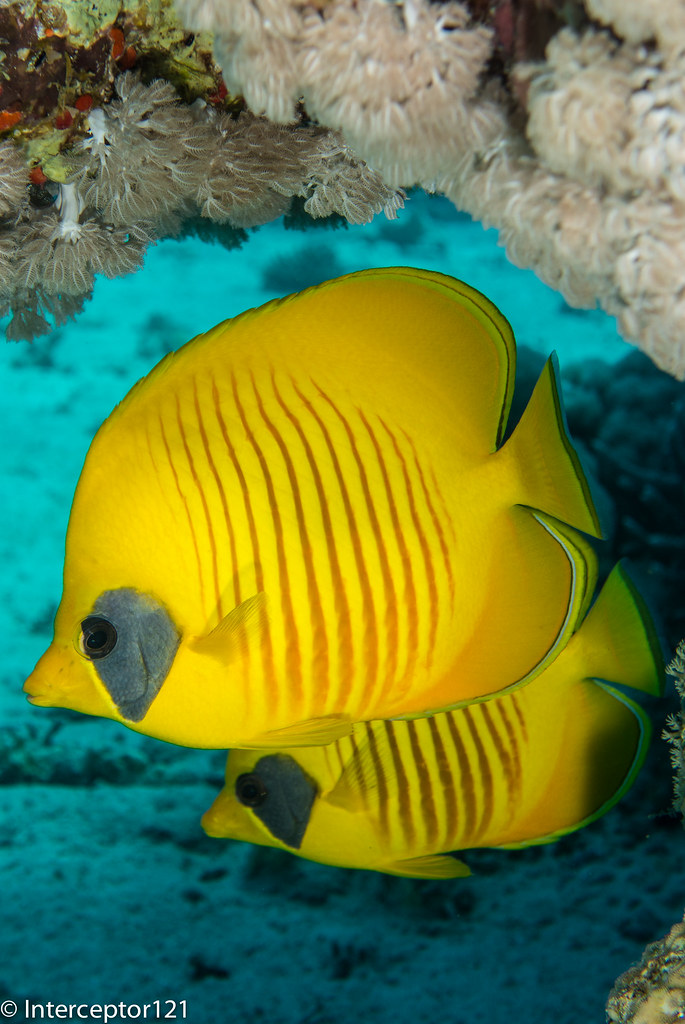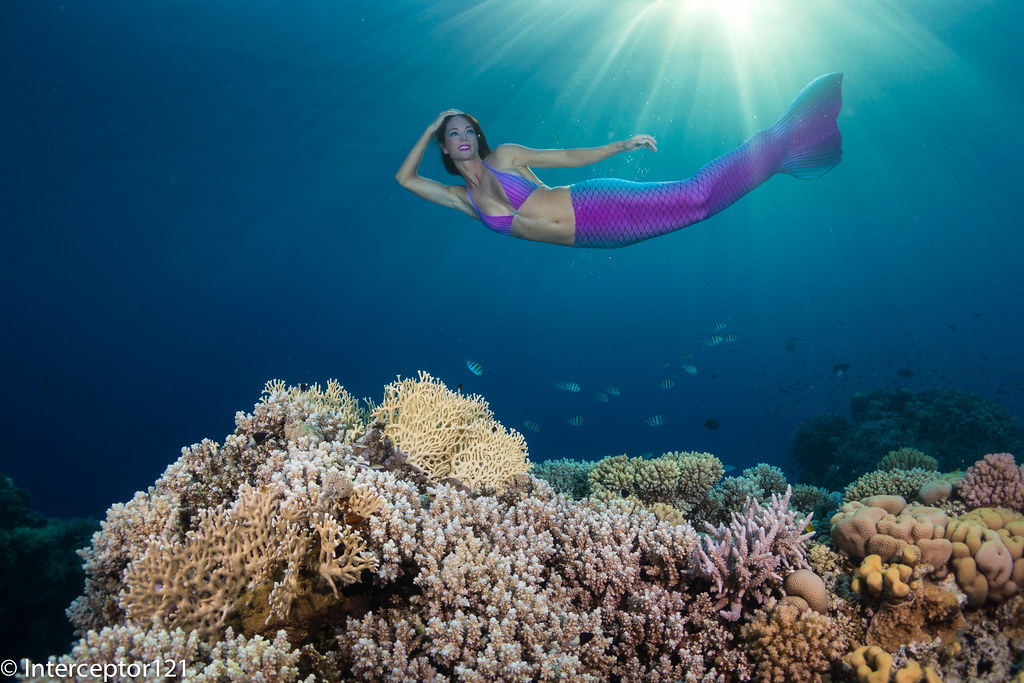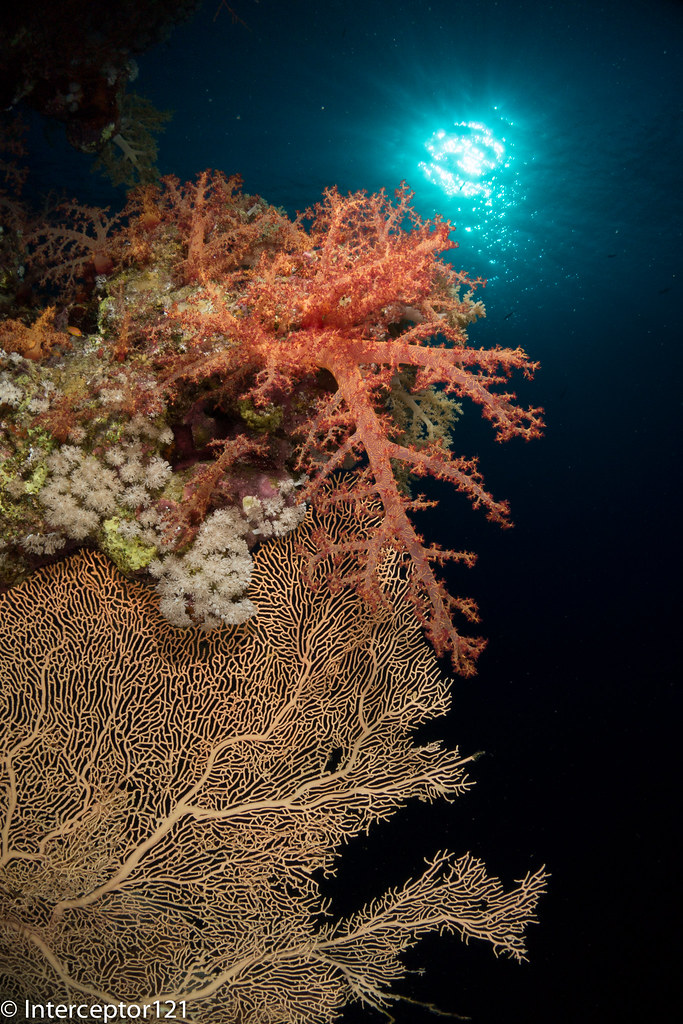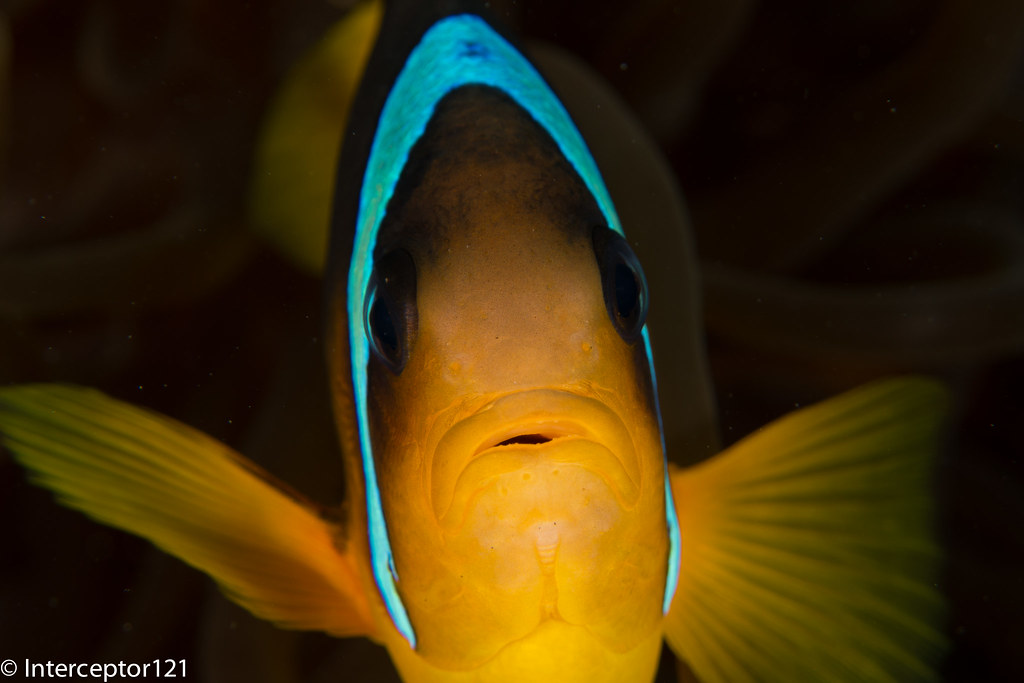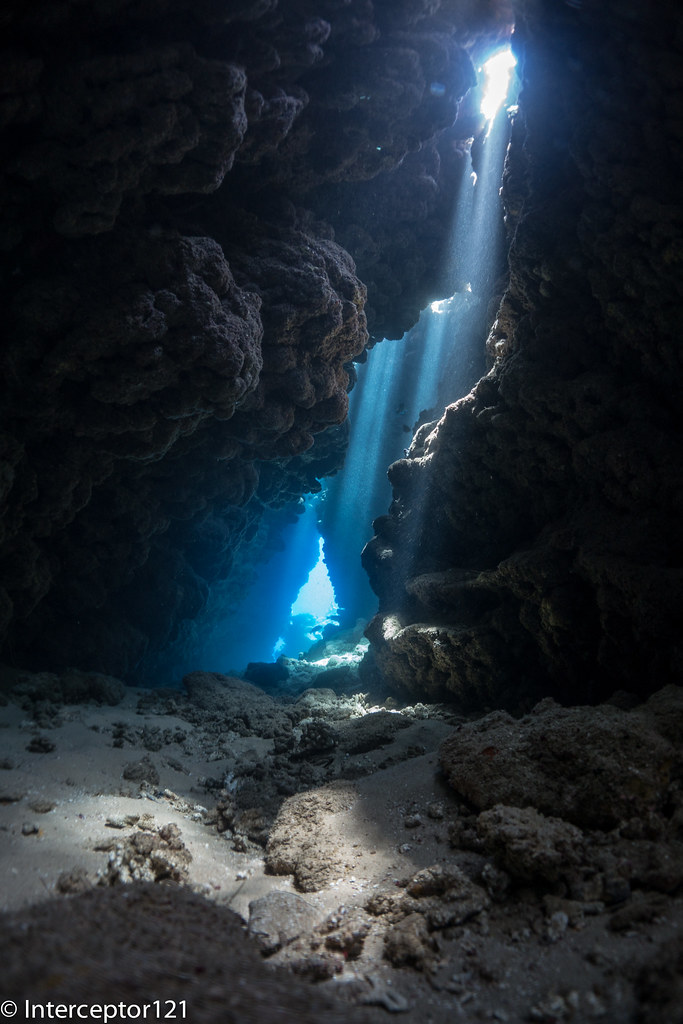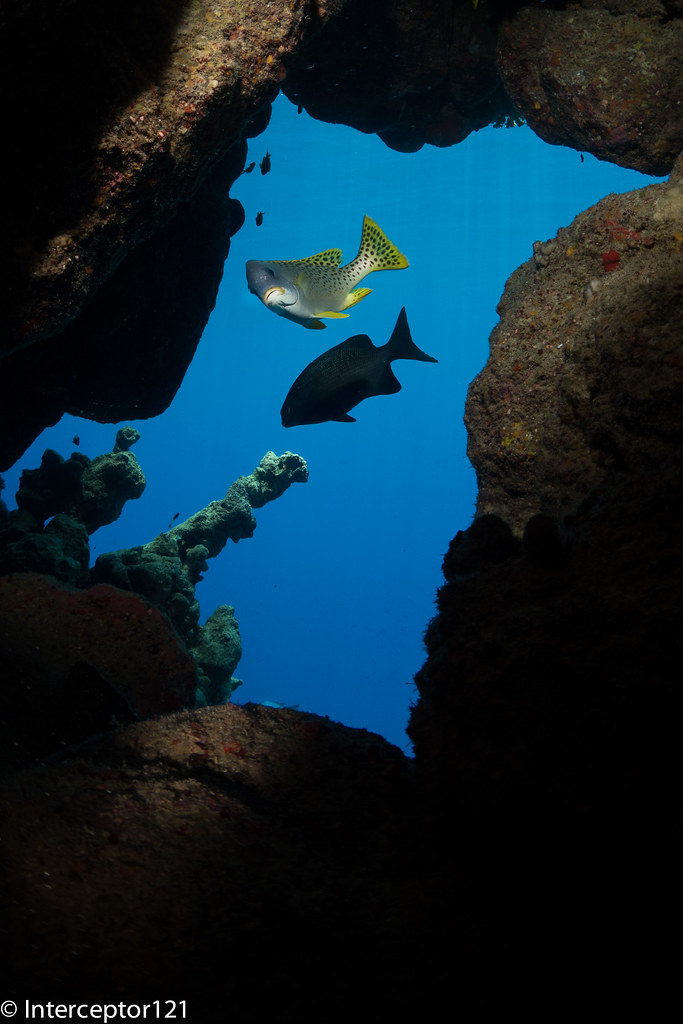A recent discussion on wetpixel with regards to mirrorless cameras vs DSLR seemed to highlight that electronic viewfinders are a major limitation vs optical viewfinders in high dynamic range scenes.
In reality an optical viewfinder does not have dynamic range is just the projection of what the camera lens is seeing through a mirror while an electronic viewfinder is a small screen limited to the 10 stops of dynamic range of the camera jpeg engine.
So there is no doubt that in certain cases the eye and the brain do a better job than a screen to manage certain scenes however to say that this is a limitation that cannot be overcome is a real stretch especially as now most images are taken with mirrorless cameras and have high dynamic range.
During my last Red Sea adventure I spent almost an entire dive shooting sunbursts. Sunburst can be tricky this is an excerpt from Alex Mustard Underwater Photography Masterclass
“At depth the overexposure at the edge of the sun ball is only in the blue channel, which creates an ugly cyan halo around the sun.”
Other situations for ideal sunburst are calm waters which I did not really have during my trip.
So possibly I had the worst conditions and most challenging for my camera, as you know I shoot a Panasonic GH5M2 and the micro four third format is frequently labelled as having very low dynamic range.
During lockdown I have practiced a lot of landscape and night photography and many sunrise and sunsets and I have learnt that actually my camera has a lot to offer if I do not fully trust the exposure tools.
The camera lies to you
The image displayed in camera and in the EVF is an output of the JPEG photo setting of the camera and shows what the manufacturer believes it is an optimal image. RAW converter do exactly the same thing and apply corrections to the raw data to show what they think looks good as a starting point for editing.

This image taken at around 18 meters so fairly deep shows a moderately clipped sunball in what was not calm surface water and a fairly dark foreground despite the strobe fired on the coal.
This image is instead the camera RAW data very close to linear and without correction. Note the cyan sunball and the very dark foreground.

This does look really dark indeed and to be frank the camera sees a lot in the dark.
The important part though is that this image is not clipped in the highlights and the darks are not crushed either.
The image can therefore be rescued to produce a decent result.

Is this image as pretty as one where the sun rays do a perfect star in calm shallow water? No.
Does it have an ugly sunball of death? No
Is it noisy grainy or lacks sharpness? Definitely not
Would you have taken this image if you believed the camera exposure settings? Probably not
How to take good high dynamic range images underwater with a mirrorless camera
There are a number of challenges to be overcome:
- On some cameras the EVF may get so dark that you can’t see any of the foreground
- The camera metering system reflects a jpeg not a raw image file
- The image review afterwards may also be incorrect
- You do not know how to edit such image to find out if it was clipped or not
Let’s take those challenges one by one.
Normally with a mirrorless camera if you try to expose so that the sunball is not clipped the display gets so dark that you can’t see the foreground unless you have a light.
Some cameras like mine have a metering mode called highlight weighted where the camera calculates exposure not on the middle grey but the highlights. This in turn allows us to calculate how much headroom is built in the exposure tool of the camera. I have calculated that for mine is 1 full stop. So the first step is to set your camera to the fastest shutter speed your flash can sync to (in my case 1/400) the lowest ISO (in my case 200) and the smallest aperture that does not go into diffraction (in my case f/10) and see if you can match that 1 stop overexposed and work from there with your aperture. Set the strobes to match your aperture in my case I set them to f/16 to start and then move to f/22 if needed if I am reasonably close otherwise I may go all the way to full power.
The second step is to switch back the camera to a normal multi metering mode and ignore entirely any warning of clipped highlights so you can compose the scene and shoot.
The jpeg review will show blinking highlights in abundance but you know that is not actually true.
Later in lightroom we apply the setting to remove the program bias and see if the scene was clipped

As you can see the scene is correctly exposed!
After some editing we are at what I consider a decent result

Here another example later in the day in another dive site an even more challenging backlit situation.

Conclusion
There is no doubt that the eye and the brain can do an easier job in those challenging condition to frame the shot however any camera including a DSLR will lie to you when it comes to the image review so ultimately you can push your equipment much further than you think if you know how.



























